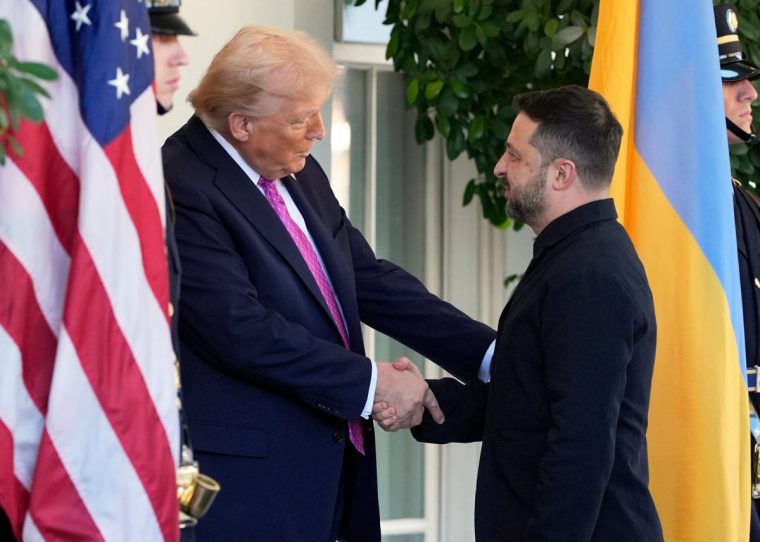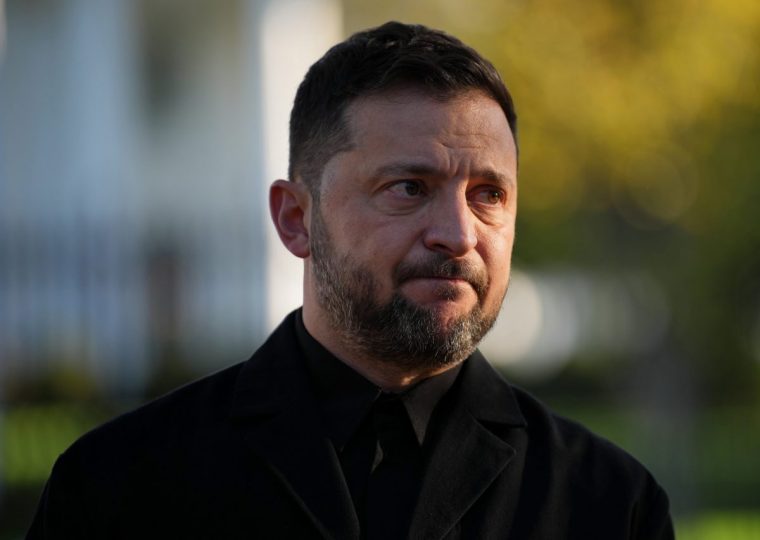Despite promising words, Zelensky once again came away from Washington empty-handed – Putin wins again
The lead-up to Thursday’s meeting in the White House between Presidents Trump and Zelensky was a mixture of high tension and weary familiarity.
On the one hand there was the ever-present risk that a face-to-face meeting between the two men could be derailed badly, as we saw in February this year with the ambush of Zelensky in the Oval Office.
On the other hand, all of the other main elements of the meeting seemed to follow a script that we have seen before multiple times.
Whether under Biden or Trump, America’s handling of requests by Ukraine for specific weapon systems that they think will help their war effort follow a set pattern. Delay and concern over “escalation” that would upset Moscow are the dominant features of the US response. But with the advent of Trump, there is the addition of pronouncements by the President himself – which are consistent only in their inconsistency and unreliability.
In that respect, Trump‘s previous comments on possible supplies of Tomahawk land attack missiles to Ukraine followed the usual pattern. Western media habitually seize on any Trump statement that could be interpreted as favourable to Ukraine and dissect it with fervent optimism, only to be routinely disappointed when words are not followed through with action. Trump’s commentary, both favourable to Ukraine and critical of it, repeatedly diverts attention from the underlying direction of a US policy which has remained entirely consistent: to constrain assistance to Ukraine, and to avoid offending Moscow.

That’s not limited to arms for Ukraine: Russia is almost unique globally in not being subjected to high tariffs under Trump’s blunderbuss approach to trade policy.
And Trump’s occasional admission that Putin is toying with him has not led to any visible consequences for Moscow.
Another familiar element to this week’s performance was a successful intervention by Russia to head Trump off from potentially doing something Moscow would not like.
The intervention also followed the usual pattern. Once Russia detected that it was possible something might happen that it would find uncomfortable – in this case, the remote chance of Ukraine being allowed access to Tomahawks – it was proactive in inserting itself into the conversation, and ensuring that Putin could speak to Trump before Zelensky did.
And then, by pressing all of the familiar buttons to generate a positive reaction, Putin may have defused the danger to Moscow.
Those buttons included both flattery for Trump himself and the repeatedly successful bait of commercial engagement with Moscow. And, as always, it was accompanied by warnings of “escalation” – a word which Russia used with great success to terrify the previous US administration into passivity.

The result appears to have been Zelensky coming away from his long journey to Washington empty-handed.
In a guarded statement afterwards, the Ukrainian President said he would not publicly discuss whether deliveries of Tomahawks were still being considered “because the US wants to avoid escalation” – precisely the line that Moscow had been proposing the White House should take.
Nevertheless it was still important for the Ukrainian delegation to be there. Even if the headline support was not forthcoming, it’s still vital for Ukraine to keep the US on its side to the greatest extent possible – and face-to-face meetings have proven to be essential in maintaining Trump’s engagement and limiting the impact of Putin’s influence.
It should have come as no surprise that for all the frenzied speculation beforehand, there would be no concrete promise of Tomahawks for Ukraine.
There’s no doubt the missiles, even in small numbers, would have been helpful for Ukraine’s campaign of long-range strikes into Russia. But throughout this conflict, close focus on delivery of one single weapon system – whether it is main battle tanks, combat aircraft, ATACMS missile systems or HIMARS artillery – has often served as a distraction from Ukraine’s long-term needs.
Ukraine’s ability to survive Russia’s attempts to destroy it – and in the long term, to beat Russia off and deter it from future attacks – depends on developing its own long-term and sustainable means of defence and deterrence, not hostage to the whims of the United States and other backers.
Putin’s intervention also dangled the juicy carrot of a direct meeting with Trump in Budapest, and the distant prospect of talking about peace. That’s despite the challenges for Putin of travelling to Europe as an internationally wanted war criminal whose aircraft are banned from EU airspace.
There are multiple layers of irony to the proposed venue, not least because it was the scene of the notorious “Budapest memorandum” which supposedly guaranteed Ukraine would be protected from Russian invasion.
It seems probable Budapest was suggested by the Russian side – not least because when asked whose idea it was, the White House repeatedly replied “your mom”.
But if Putin and Trump do meet once more, there is little reason at the moment to think that this will bring any benefit to anybody but Russia. There’s no reason to think that the Kremlin’s calculations have changed since the summer, when despite Trump‘s best efforts to coerce Ukraine into surrender on Russian terms, Moscow wasn’t buying it – because Putin and those around him assessed that they had more to gain from continuing the war than from freezing the conflict and pocketing the gains they had already made.
For as long as that continues, the only circumstance under which Putin might be induced to end the war is if Trump overcomes his reluctance to pressure Moscow as well as Ukraine. And after Thursday’s White House meeting, there is still no indication of that happening. So Russia’s war will continue, an immense and tragic cost in Ukrainian lives, and with the continued acquiescence of the United States.
